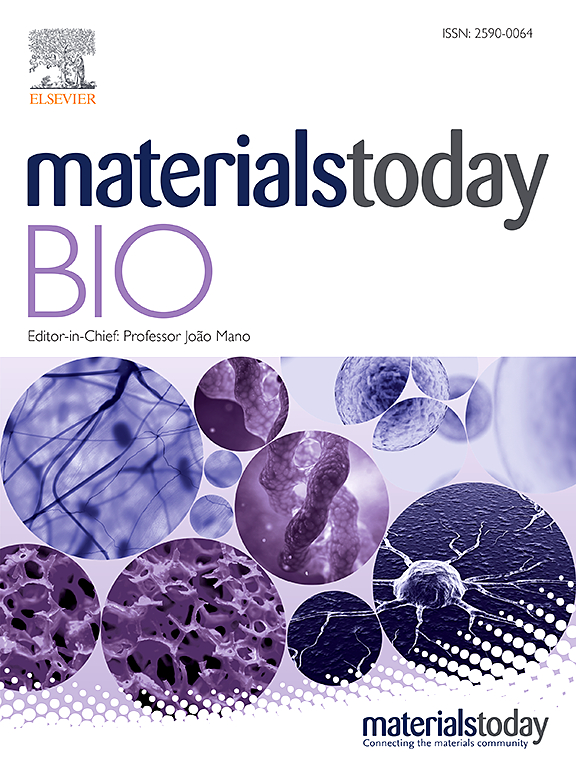Magnetic scaffolds for the mechanotransduction stimulation in tendon tissue regeneration
IF 8.7
1区 医学
Q1 ENGINEERING, BIOMEDICAL
引用次数: 0
Abstract
Nowadays, tendon injuries represent a global health issue that annually affects millions of individuals. An innovative approach for their treatment is represented by the development of tissue engineered scaffolds able to support the host cells adhesion, differentiation, and proliferation. However, the scaffold alone could be insufficient to guarantee an improvement of healing control. Magnetite nanoparticles (Fe3O4 NPs) are gaining interest due to their unique properties. In particular, when combined with bio-mimetic scaffolds, they should lead to the cells mechano-stimulation, improving the tenogenic differentiation and allowing a deeper tissue reparation.
The aim of this work is the study and the development of scaffolds based on polyhydroxybutyrate and gelatin and doped with Fe3O4 NPs. The scaffolds are characterized by an aligned fibrous shape able to mimic the tendon fascicles. Moreover, they possess a superparamagnetic behavior and a slow degradation rate that should guarantee structural support during the tissue regeneration. The magnetic scaffolds promote cell proliferation and alignment onto the matrix, in particular when combined with the application of an external magnetic field. Also, the cells are able to differentiate and produce collagen I extracellular matrix. Finally, the magnetic scaffold in vivo promotes complete tissue healing after 1 week of treatment when combined with the external magnetic stimulation.

求助全文
约1分钟内获得全文
求助全文
来源期刊

Materials Today Bio
Multiple-
CiteScore
8.30
自引率
4.90%
发文量
303
审稿时长
30 days
期刊介绍:
Materials Today Bio is a multidisciplinary journal that specializes in the intersection between biology and materials science, chemistry, physics, engineering, and medicine. It covers various aspects such as the design and assembly of new structures, their interaction with biological systems, functionalization, bioimaging, therapies, and diagnostics in healthcare. The journal aims to showcase the most significant advancements and discoveries in this field. As part of the Materials Today family, Materials Today Bio provides rigorous peer review, quick decision-making, and high visibility for authors. It is indexed in Scopus, PubMed Central, Emerging Sources, Citation Index (ESCI), and Directory of Open Access Journals (DOAJ).
 求助内容:
求助内容: 应助结果提醒方式:
应助结果提醒方式:


